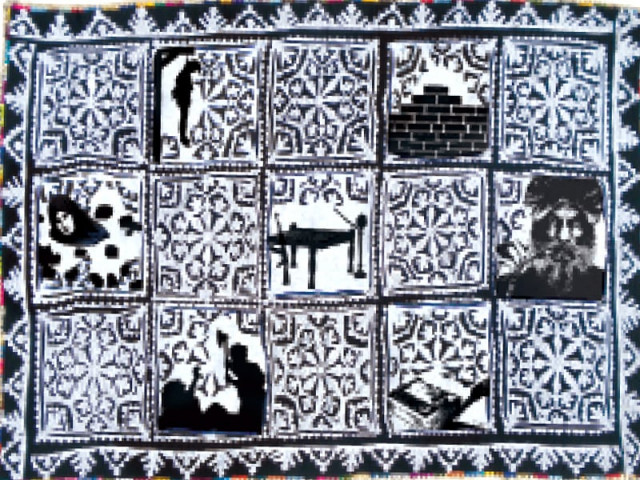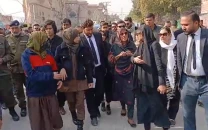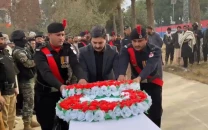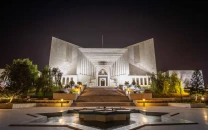Communication breakdown: In Sindh, tradition is the judge and jury
The who, what, why, how and all you need to know about jirgas.

Communication breakdown: In Sindh, tradition is the judge and jury
When Inspector Abdul Jabbar Mahar’s brother, Balakh Sher, ran away with Shaista Almani in 2004, he knew there would be hell to pay.
“The case became very high profile as a majority of Baloch sardars, including the late Nawab Akbar Bugti, were supporting the Almani tribe,” he claimed. “After Balakh and Shaista eloped, three women from our tribe were kidnapped by them [Almani tribesmen].” They were returned only when elders intervened. As the conflict worsened, the tribal leaders decided to hold a jirga.
According to Abdul Jabbar, the jirga was led by former chief minister Arbab Ghulam Rahim at Chief Minister House. Sardar Ali Gohar Mahar represented the Mahars and Sardar Mohammad Usman Almani the Almanis. “Sardar Mohammad Usman kept asking Sardar Gohar to return the girl,” he said. “But we told them that the couple was not in the country.” They were sent abroad with help from NGOs and human rights organisations.
Nearly eight years and six bodies later, both tribes are still at war and it seems that Abdul Jabbar’s life is still in danger. The inspector, who is posted at the A-Section police station, said that he goes about his work as usual but is careful whenever he goes home as the route to his village runs through the other tribe’s land. Once an Almani man came searching for him at the police station with the intention of killing him. Four months ago, when the Almanis caught wind that Balakh and Shaista were in Karachi, they sent assassins.
This jirga was not made for fighting
In Sindh, two warring tribes hold a jirga to resolve a dispute. For some tribes all it takes is one jirga, for others it can take around a dozen, and results are not guaranteed. For example, the Mahar and Chachar dispute took two jirgas, 11 deaths and eight years to settle.
A dispute can stem from something as small as cows grazing on someone else’s fields or a boy giving a girl from separae clan a missed call. Revenge is exacted by rape, murder and theft. As violence spirals out of control, impartial tribal elders sometimes visit the rival tribe. They enter enemy turf preceded by a group of young girls holding aloft the Holy Quran and Shah jo Risalo as symbols of peace and forgiveness. This peace caravan is commonly referred to as ‘Minth mair Kaflo’.
The elders decide on a day and who will preside over the jirga. Tribesmen are informed by word of mouth.
The gathering is usually held in an autaq or den. The tribesmen walk in one by one and sit on opposite sides. Sometimes policemen attend just to be on the safe side.
The sardar, a neutral tribal elder who acts as the arbitrator, walks in. Everyone looks up to him and tries to kiss his hand, some even throw rose petals at him as he walks into the room. He wipes his hands on his white shalwar kameez and straightens his Sindhi topi before shaking hands with the representatives, or vado saeen of the warring clans. The case history is read out aloud.
The decision of who speaks first rests with the sardar. All statements are recorded on paper. No one is allowed to speak when the clan’s vado saeen gives their side of the story, however, there is often name calling and fights do break out. After the sardar has heard both parties, he walks into another room with clan representatives to discuss the matter further. Once inside, the men discuss the credentials of both families - who has given more to society and how - they weigh the pros and cons and the process can take days, sometimes weeks.
However, once a decision is reached, the sardar walks out of the room and reconvenes the session and makes the announcement. This can range from monetary settlements to an exchange of daughters and selling land.
Judgments of the jirga
According to former minister Mir Manzoor Panhwar, who is often referred to as a jirga specialist, not all reconciliatory meetings are jirgas. “A jirga is conducted under the supervision of a government representative,” he said. “A faisla [decision] or sulah [comprise] is conducted by people like us.” Sardar Wahid Bux Bhayo, Sardar Himmat Ali Kamariyo and Sardar Raheem Bux Bozdar agreed that reconciliatory meetings were held to solve disputes between two tribes and should not be called jirgas.
While talking to The Express Tribune about sung chatti or bartering girls to settle the score, Panhwar said that it was wrong as little girls should not suffer for what their elders did. “A certain amount of money cannot compensate for murder, but we have to impose certain fines on those who are guilty to make them suffer,” he said. “The guilty party will either work hard to earn that money or sell their property. You cannot exchange girls to make up for killing someone or an elopement. It is just intolerable.”
What’s for lunch?
Two of the most popular dishes served at jirgas are biryani and qorma. At a jirga at Sukkur House, the residence of Senator Islamuddin Shaikh, the sardars were served special dishes like mutton karhai, partridges, roast chicken and mutton pulao.
Published in The Express Tribune, October 7th, 2012.



















COMMENTS
Comments are moderated and generally will be posted if they are on-topic and not abusive.
For more information, please see our Comments FAQ